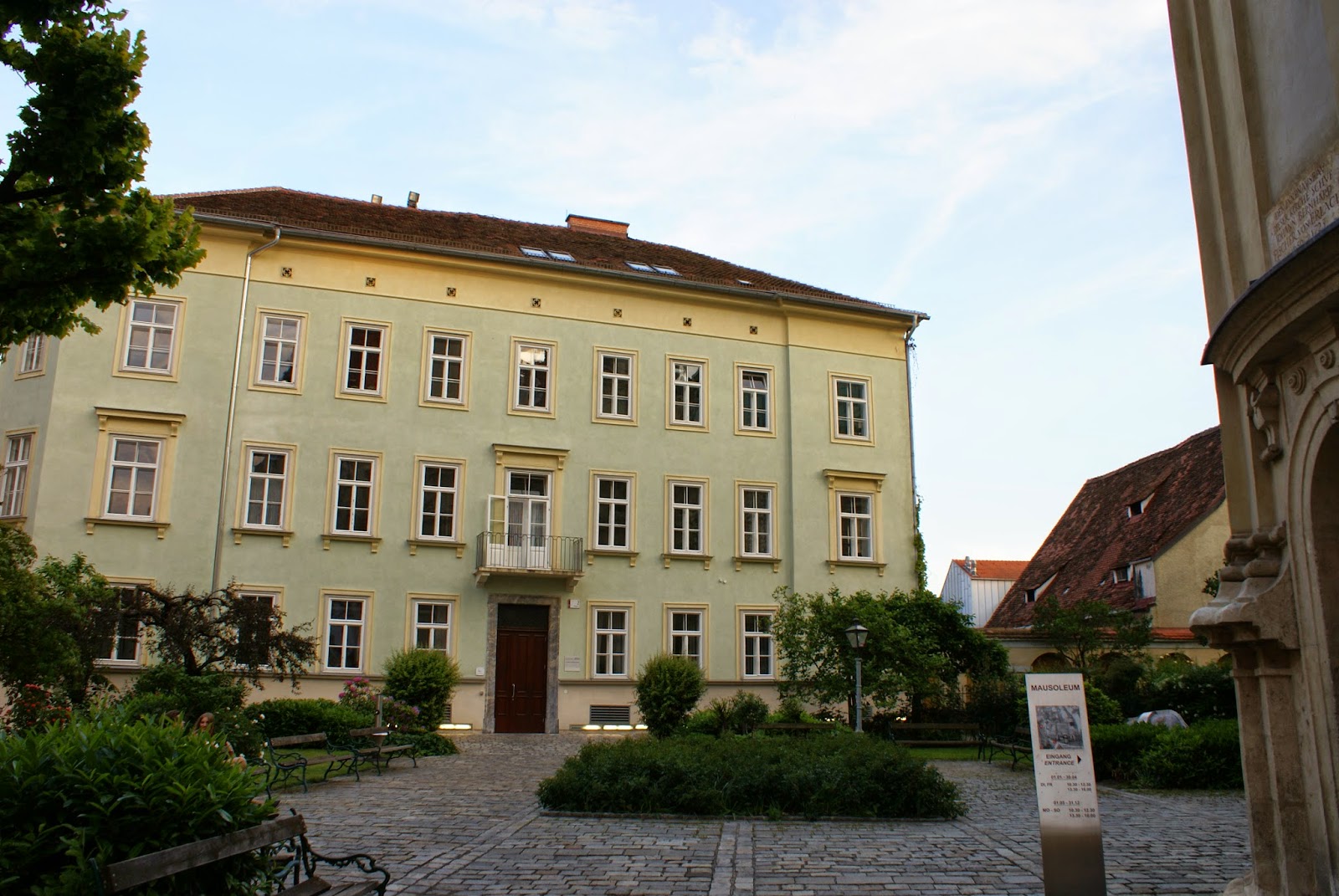On Wednesday evening the weather was nice so I decided to head into the city and wander around a bit.
Rex had mentioned that there was a monument to the Ottoman invasion in the Sporgasse. I was able to find it. This little guy sticks out of the building just underneath the roof.
Buildings with particular historical value generally have plaques on them explaining their significance. In this case, the Palais Saurau Goess was built in 1566. The statue of the Turkish soldier is from the 16th or 17th century. The Austro-Hungarian Empire and the Ottoman Empire were not particularly friendly neighbors. See http://en.wikipedia.org/wiki/Ottoman%E2%80%93Habsburg_wars for a summary of the conflict(s).
The gate has some lovely stone and ironwork.
Another view of the statue, which I have nicknamed Little Turkish Dude.
After finding Little Turkish Dude, I kept wandering around. Here's a look back at the street.
The next interesting place I encountered was the Karmeliterplatz, named after a convent of Carmelite nuns that used to be located there.
I also found another way to get to the top of the Schlossberg (there are several) that doesn't involve the giant staircase.
I didn't see an inscription for this statue, but the pilgrim's staff, exposed leg, and dog indicate that this is a statue of St. Rochus (Roch or Rocco). He allegedly helped plague victims while on a pilgrimage.
The column itself is dedicated to the trinity and was erected in 1680 to celebrate the end of an outbreak of plague. There's a giant plague column covered in creepy cherubs in Vienna.
As I wandered into the square, I caught the very end of what appeared to be an open public lecture series. The speaker who they were thanking was a pharmacist/doctor who had given a talk on hospice care. I wish I had gotten there a little earlier so I could hear more of what the talk was about.
This square also contains the main offices of the Steirische Volkspartei, which for some reason is represented by a flying cow. If you look at the windows, you'll see that they're covered in bits of spiky wire. This is very common and its designed to keep the pigeons from nesting and pooping on everything.
This is a monument to a pacifist priest, Dr. Max Joseph Metzger, who founded organizations dedicated to peace and ecumenism. He was executed in 1943.
This is the colorfully painted former Carmelite convent, which currently houses the Styrian State Archives.
They appear to have an exhibit on WWI propaganda that I need to check out sometime.
The facade is a giant sundial.
A shrine near the Antoniuskirche:
Here's the Antoniuskirche, a Roman Catholic church located at the foot of the Schlossberg.
Next to the church is the Volkskundemuseum, which currently has an exhibition on superstitions I want to visit.
The entrance to the Volkskundemuseum.
Windows tend to be interestingly decorated.
French graffiti.
I've concluded that I enjoy taking pictures of plants growing out of walls.
Police headquarters, iirc.
I also like photographing rock textures.
I'm getting tired so I'm going to caption fewer of these as I go along, but I followed the road through the Paulustor, one of the old gates in the city wall.
The outside of the gate.
A war memorial against an intact part of the old city wall.
"To remember the dead, to warn the living."
Kepler memorial statue and garden.
Need to figure out what this tree with the giant flowers is called at some point.
A tree this massive should have a name, but I didn't find a plaque anywhere for it.
Found a rose garden.
Went back in to the city center through a different gate.
This gate led me to the cathedral.
The steps lead to a church.
And then I was back at the Hauptplatz.
Waiting for the tram.
Austrians: Not immune to bad puns.
This anthropomorphized ticket machine creeps me out for some reason.
When I got home, I kidnapped the cat for awhile.
Feel free to leave a question in the comments if there's something I didn't caption that you want explained.




















































































































































































































No comments:
Post a Comment